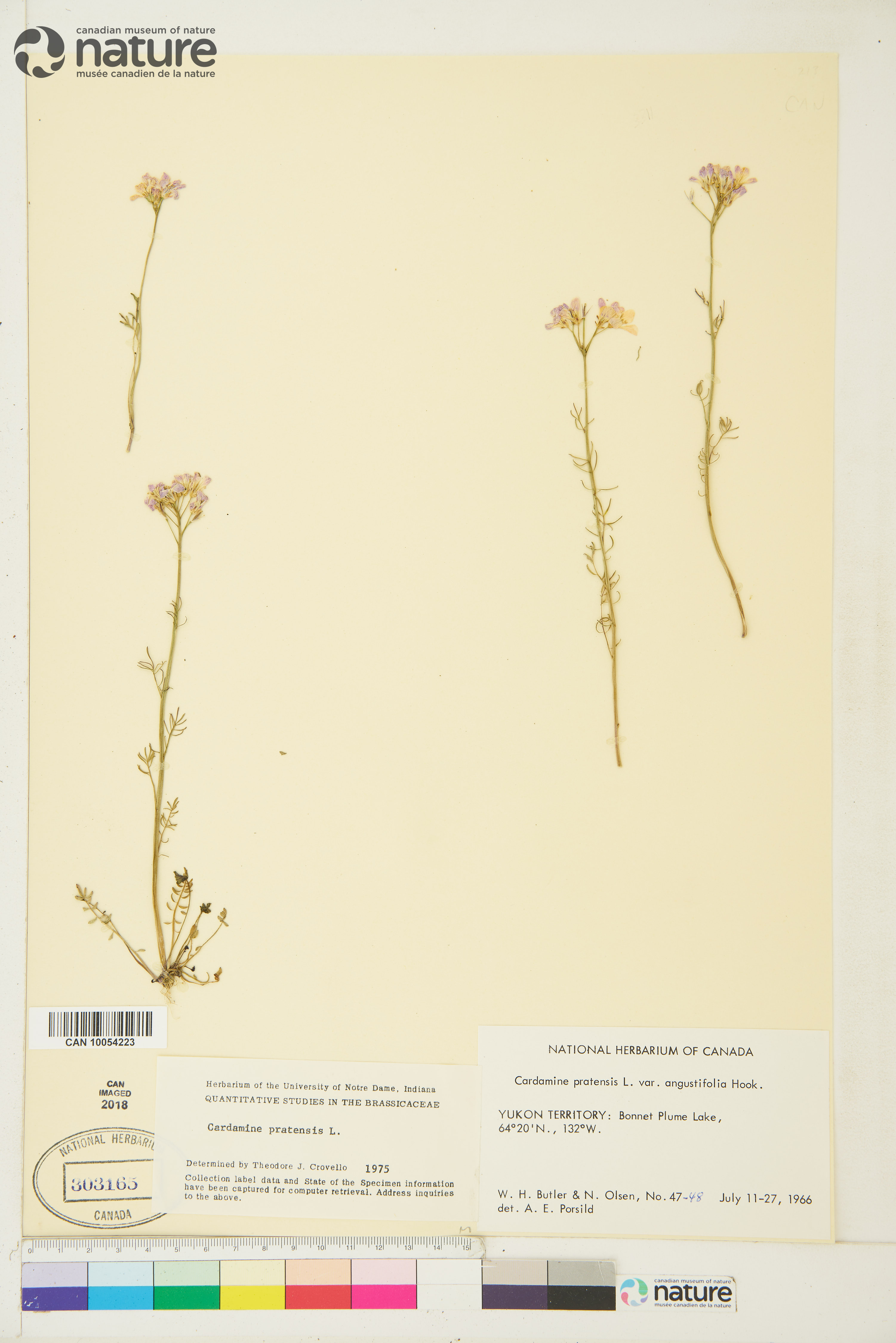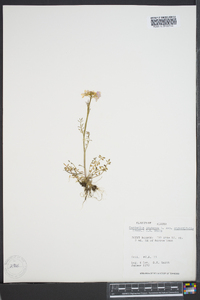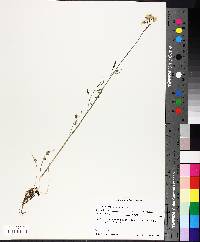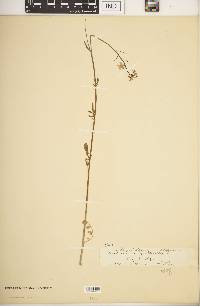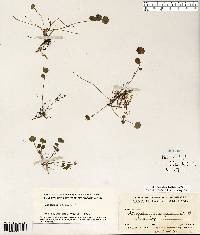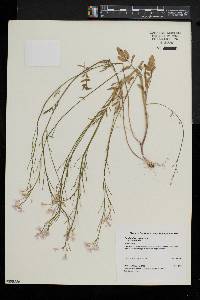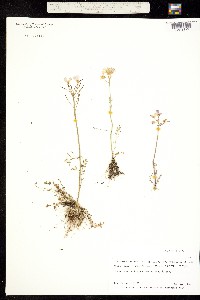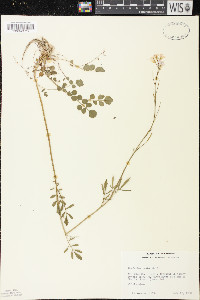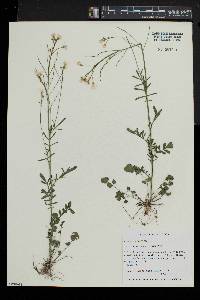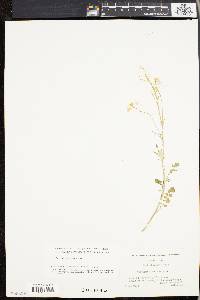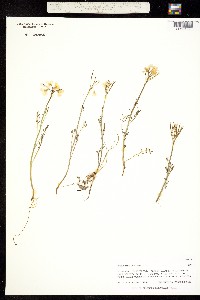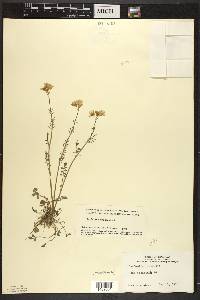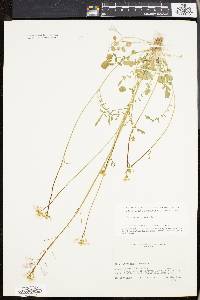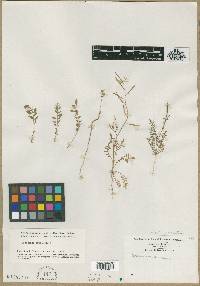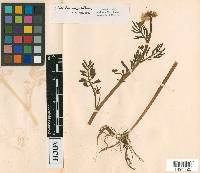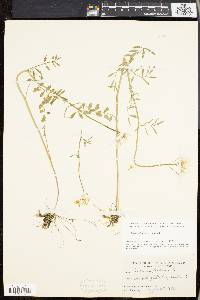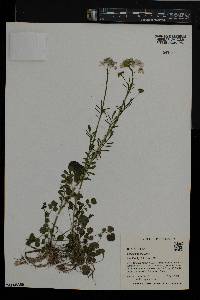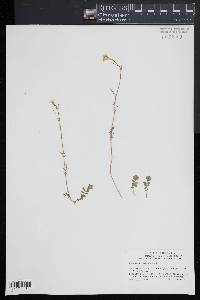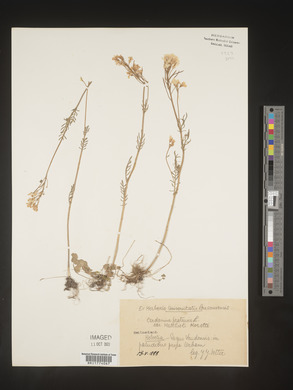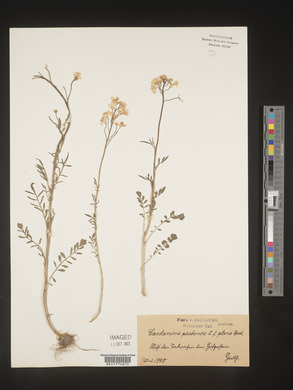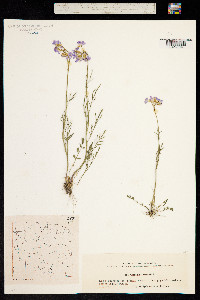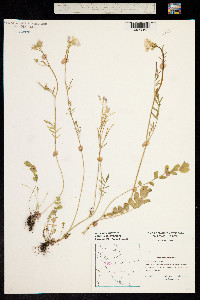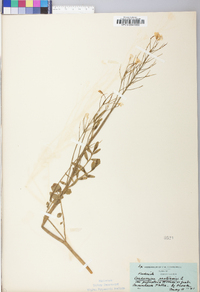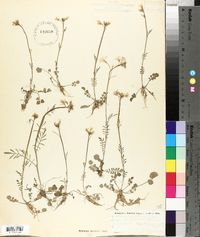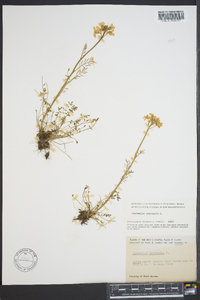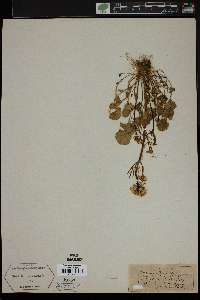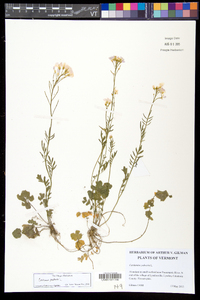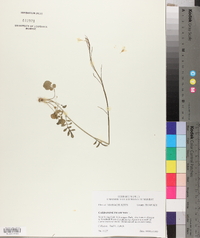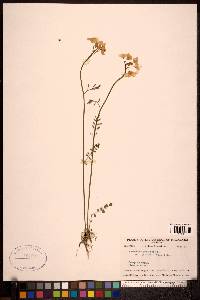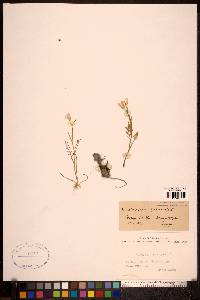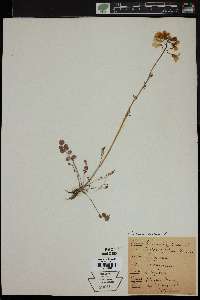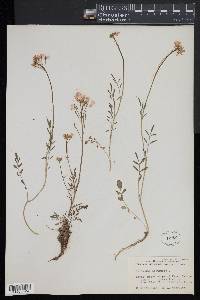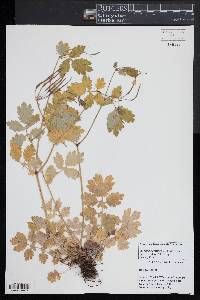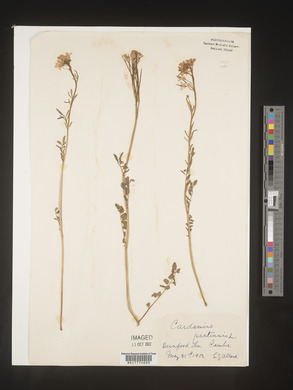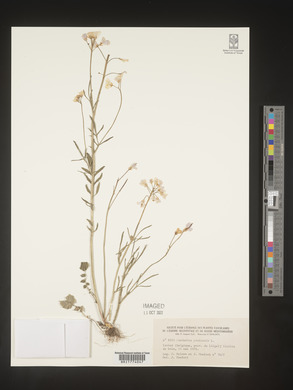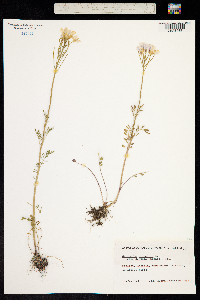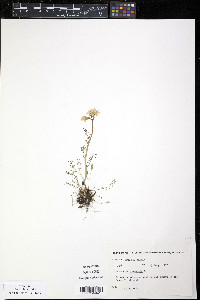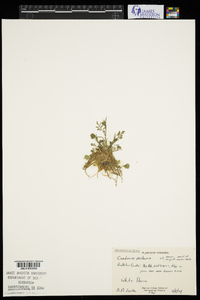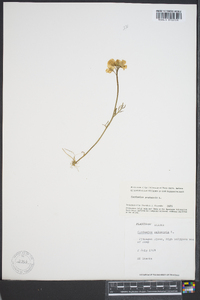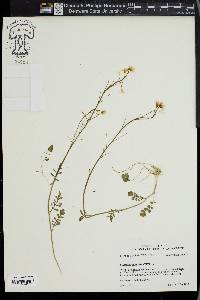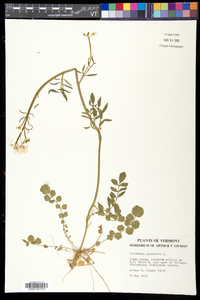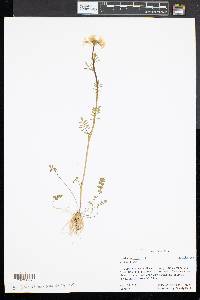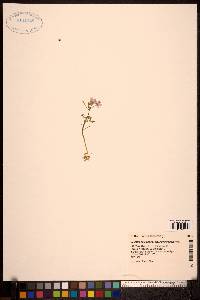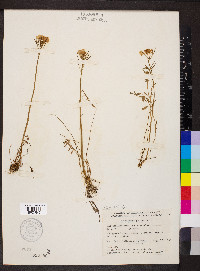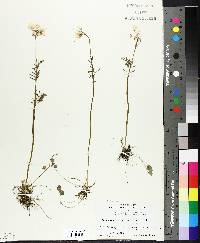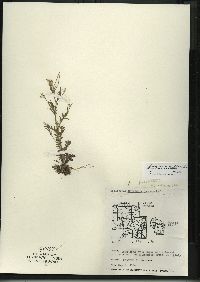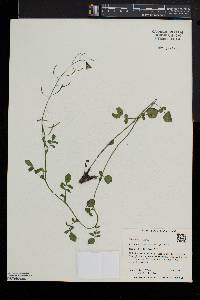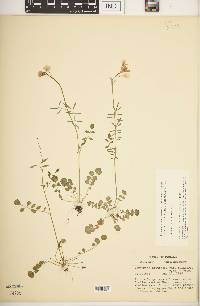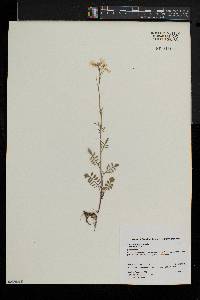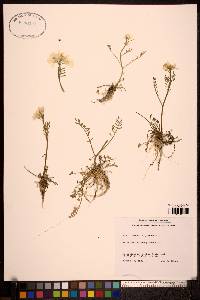Cardamine pratensis
|
|
|
|
Family: Brassicaceae
Cuckoo-Flower
|
Perennials; usually glabrous, rarely sparsely pilose basally. Rhizomes cylindrical, (not fragile), relatively short, (not fleshy). Stems erect, unbranched, (0.8-)1.5-5.5(-8) dm. Rhizomal leaves simple or 5-9(-31)-foliolate, to 30 cm, (thin, veins raised), leaflets petiolulate or sessile; petiole (1-)2-7(-10) cm; lateral leaflets petiolulate or sessile, blade similar to terminal or smaller, orbicular, ovate, or obovate, margins crenate or repand; terminal leaflet (petiolule to 1.5 cm), blade orbicular or broadly obovate, 0.3-2 cm diam., base usually rounded, rarely subreniform or cuneate, margins repand, (apex rounded). Cauline leaves 2-12(-18), pinnatisect, petiolate, leaflets petiolulate or sessile, (2-17 cm including petiole, thin, veins raised); petiole base not auriculate; lobes or leaflets (4-7(-13) each side of rachis), petiolulate or sessile and decurrent, blade similar to terminal lobe or leaflet, margins usually entire, rarely dentate; terminal lobe or leaflet (petiolulate or sessile), blade linear, oblong, ovate, or lanceolate, 1-2.5(-3.5) cm × 5-8(-10) mm, (surfaces glabrous). Racemes ebracteate. Fruiting pedicels erect-ascending or subdivaricate, (5-)12-25(-30) mm. Flowers: sepals (erect or spreading), oblong or ovate, (2.5-)3-5(-6) × 1-2 mm, lateral pair saccate basally; petals usually purple or lilac, rarely white, obovate, (6-)8-15(-18) × 3-7.5(-10) mm, (clawed, apex rounded or emarginate); filaments: median pairs 5-10 mm, lateral pair 3-6 mm; anthers narrowly oblong, (0.8-)1.2-2 mm. Fruits linear, (1.6-)2.5-4.5(-5) cm × (1.2-)1.5-2.3 mm; ovules 20-30 per ovary; style (0.5-)1-2.2(-2.7) mm, (stout). Seeds light brown, oblong, 1.2-1.8(-2) × 1-1.4 mm. 2n = 16. Flowering May-Aug. Moist grounds, stream sides, limestone shores, sedge and grass meadows, marshy pond margins, mossy areas, wet hollows, boggy areas, turfy shores, damp creek banks, swamps, brooks and ditches, moist ravines, springy swales; 0-1000 m; B.C., N.B., Nfld. and Labr. (Nfld.), N.S., Ont., Que.; Conn., Ind., Maine, Mass., Mich., N.H., N.J., N.Y., Ohio, Pa., Vt.; Eurasia. The taxonomy of Cardamine pratensis in North America requires further detailed study. Most, if not all, populations of this species were introduced from Europe. Some specimens resemble the European C. dentata Schultes (high polyploid, characterized by all leaves, including distalmost, pinnate with petiolate and sometimes deciduous leaflets) and these populations might be native.
Perennial herb 20 cm - 0.5 m tall Flowers: in a dense, branched cluster, stalked, pinkish, 7 - 15 mm long. Petals four. Stamens six. Fruit: a narrow pod, mostly upright on an ascending stalk, 2.5 - 4 cm long, cylindrical, with a 1 - 2 mm long beak. Basal leaves: three to eight, pinnately divided, long-stalked. Leaflets 5 - 20 mm long, broadly oval to kidney-shaped. Terminal leaflet largest, toothed. Stem leaves: alternate, pinnately divided, stalked, lowest like the basal, others smaller, with seven to seventeen leaflets. Lateral leaflets tend to be stalkless. Lower leaflets oval to oblong (similar to basal), upper ones linear. Similar species: Cardamine pratensis is the only species of Cardamine in the Chicago Region with 7 mm long or longer flower petals and pinnately divided leaves. Flowering: May to early June Habitat and ecology: Typical of wet areas, such as bogs and marshes. It is rare in the Chicago Region, and has been extirpated from Lake County, Indiana. There it grew along the Grand Calumet and Little Calumet rivers. Occurence in the Chicago region: native Etymology: Cardamine comes from the Greek word kardamon, which refers to plants in the cress family. Pratensis means "of the meadows." Author: The Morton Arboretum Erect perennial 2-5 dm; basal lvs long-petioled, with 3-8 broadly oval to rotund or reniform lfls 5-20 mm, the terminal the largest; lowest cauline lvs sometimes like the basal, the others all shorter, on shorter petioles, the mostly 7-17 lfls oval to oblong or linear; fls crowded, the pet obovate, 8-15 mm; mature pedicels ascending, 8-15 mm; frs suberect, 2.5-4 cm, the beak 1-2 mm; 2n=16-96. Circumboreal, with 2 vars. in our range. Var. pratensis, a native of Eurasia, is intr. in moist soil of roadsides, lawns, and meadows from Nf. to N.Y. and N.J.; it has pink fls, the terminal lfl of the basal lvs is angularly dentate, and the lateral lfls of the cauline lvs tend to be sessile; 2n=<56. Apr.-July. Var. palustris Wimm. & Graebn. is native in bogs and swamps throughout most of Can., extending s. to N.J., O., n. Ind., and Minn.; it has white fls, the terminal lfl of the basal lvs is entire or nearly so, and the lateral lfls of the cauline lvs are commonly contracted to a short petiole; 2n=>56. May, June. (C. palustris) Gleason, Henry A. & Cronquist, Arthur J. 1991. Manual of vascular plants of northeastern United States and adjacent Canada. lxxv + 910 pp. ©The New York Botanical Garden. All rights reserved. Used by permission. From Flora of Indiana (1940) by Charles C. Deam This species inhabits tamarack bogs and marshes in a few of our northern counties. I am not certain of its abundance but I think it is rather rare and local. ...... Indiana Coefficient of Conservatism: C = 10 Wetland Indicator Status: n/a |

